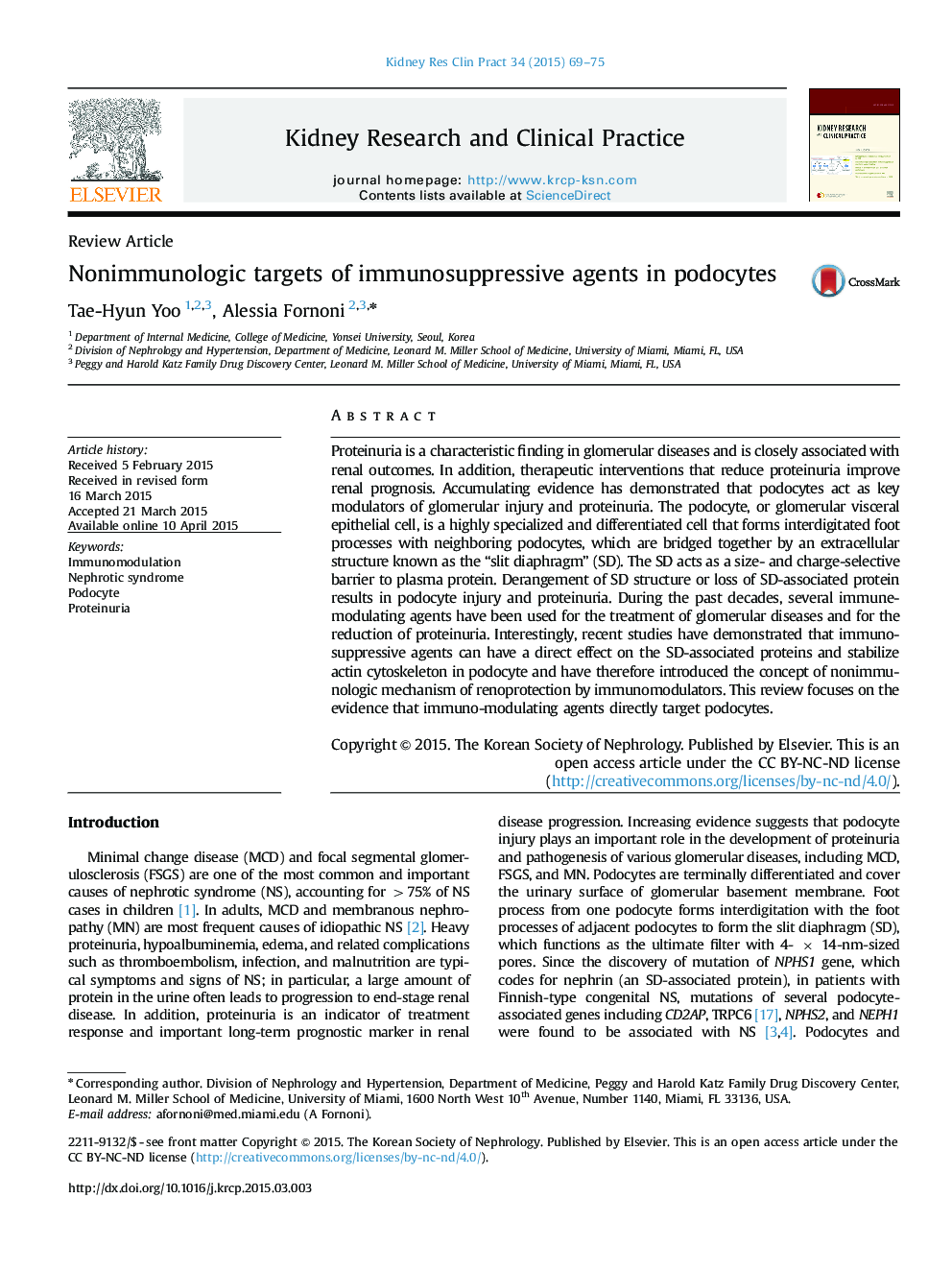| Article ID | Journal | Published Year | Pages | File Type |
|---|---|---|---|---|
| 3890968 | Kidney Research and Clinical Practice | 2015 | 7 Pages |
Proteinuria is a characteristic finding in glomerular diseases and is closely associated with renal outcomes. In addition, therapeutic interventions that reduce proteinuria improve renal prognosis. Accumulating evidence has demonstrated that podocytes act as key modulators of glomerular injury and proteinuria. The podocyte, or glomerular visceral epithelial cell, is a highly specialized and differentiated cell that forms interdigitated foot processes with neighboring podocytes, which are bridged together by an extracellular structure known as the “slit diaphragm” (SD). The SD acts as a size- and charge-selective barrier to plasma protein. Derangement of SD structure or loss of SD-associated protein results in podocyte injury and proteinuria. During the past decades, several immune-modulating agents have been used for the treatment of glomerular diseases and for the reduction of proteinuria. Interestingly, recent studies have demonstrated that immunosuppressive agents can have a direct effect on the SD-associated proteins and stabilize actin cytoskeleton in podocyte and have therefore introduced the concept of nonimmunologic mechanism of renoprotection by immunomodulators. This review focuses on the evidence that immuno-modulating agents directly target podocytes.
